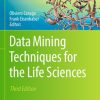Edexcel GCSE 9 1 Biology 1st Edition by Mark Levesley ISBN 9781292120201 1292120207
$50.00 Original price was: $50.00.$25.00Current price is: $25.00.
Edexcel GCSE 9 1 Biology 1st Edition by Mark Levesley – Ebook PDF Instant Download/Delivery: 9781292120201 ,1292120207
Full download Edexcel GCSE 9 1 Biology 1st Edition after payment

Product details:
ISBN 10: 1292120207
ISBN 13: 9781292120201
Author: Mark Levesley
This Student Book uses the Pearson Checkpoint learning approach, which has been designed to help students to develop the skills required for the exams.
The Checkpoint Teaching and Learning approach will help students to remember the key learning points from each topic, and to use their learning to apply, analyse and evaluate in new contexts. This support will help to develop the full range of skills that will be assessed in the exam.
Other key features of the Student Book include:
a Preparing for the Exam section at the end of every Topic, to help students understand how six mark questions will be assessed
Core Practical pages that give students the opportunity to practice answering practical-based exam questions
Questions that are all rated on a scale of 1 to 12 using the Pearson Steps system, encouraging students to answer increasingly difficult questions as they progress through the course.
Edexcel GCSE 9 1 Biology 1st Edition Table of contents:
Teaching and learning
SB1: Key Concepts in Biology (Paper 1 and Paper 2)
SB1a: Microscopes
SI units
SB1b: Plant and animal cells
Electron micrographs
SB1b: Core practical – Using microscopes
SB1c: Specialised cells
Specialised cells for digestion
Specialised cells for reproduction
SB1d: Inside bacteria
SB1e: Enzymes and nutrition
SB1f: Testing foods
SB1f: Core practical – Testing foods
SB1g: Enzyme action
SB1h: Enzyme activity
SB1h: Core practical – pH and enzymes
SB1i: Transporting substances
Osmosis
Active transport
SB1i: Core practical – Osmosis in potato slices
SB1: Preparing for your exams
SB2: Cells and Control (Paper 1)
SB2a: Mitosis
Asexual reproduction
Growth of cancer tumours
SB2b: Growth in animals
Cell differentiation
SB2c: Growth in plants
SB2d: Stem cells
SB2e: The brain
Cerebral cortex
Cerebellum
Medulla oblongata
SB2f: Brain and spinal cord problems
Scanning
Spinal cord damage
Brain tumours
SB2g: The nervous system
SB2h: The eye
Eye problems
SB2i: Neurotransmission speeds
Synapses
The reflex arc
SB2: Preparing for your exams
SB3: Genetics (Paper 1)
SB3a: Sexual and asexual reproduction
SB3b: Meiosis
Gamete production
SB3ci: DNA
Hydrogen bonding
The DNA code
SB3cii: DNA extraction
SB3d: Protein synthesis
Transcription
Translation
SB3e: Genetic variants and phenotypes
Mutations
Mutations in non-coding DNA
SB3f: Mendel
SB3g: Alleles
SB3h: Inheritance
SB3i: Multiple and missing alleles
Sex-linked genetic disorders
SB3j: Gene mutation
The Human Genome Project
SB3k: Variation
SB3: Preparing for your exams
SB4: Natural Selection and Genetic Modification (Paper 1)
SB4a: Evidence for human evolution
Fossil evidence
Stone tools
SB4b: Darwin’s theory
Faster evolution
SB4c: Development of Darwin’s theory
The pentadactyl limb
SB4d: Classification
SB4e: Breeds and varieties
Genetic engineering
SB4f: Tissue culture
SB4g: Genes in agriculture and medicine
Selective breeding risks
Genetic engineering issues
SB4h: GM and agriculture
SB4i: Fertilisers and biological control
SB4: Preparing for your exams
SB5: Health, Disease and the Development of Medicines (Paper 1)
SB5a: Health and disease
SB5b: Non-communicable diseases
Alcohol and disease
SB5c: Cardiovascular disease
Smoking and disease
Treating cardiovascular disease
SB5d: Pathogens
Hidden pathogens
SB5e: Spreading pathogens
SB5f: Virus life cycles
SB5g: Plant defences
SB5h: Plant diseases
SB5i: Physical and chemical barriers
Sexually transmitted infections
SB5j: The immune system
Immunisation
SB5k: Antibiotics
SB5k: Core practical – Antibiotics
SB5l: Monoclonal antibodies
SB5: Preparing for your exams
SB6: Plant Structures and their Functions (Paper 2)
SB6a: Photosynthesis
Leaf adaptations
SB6b: Factors that affect photosynthesis
Inverse square law
SB6b: Core practical – Light intensity and photosynthesis
SB6c: Absorbing water and mineral ions
Root hair cells
Diffusion and osmosis
Active transport
SB6d: Transpiration and translocation
Xylem
Phloem
SB6e: Plant adaptations
Adaptations for extremes
SB6f: Plant hormones
Phototropism
Gravitropism
Other plant hormones
SB6g: Uses of plant hormones
Gibberellins
Ethene
SB6: Preparing for your exams
SB7: Animal Coordination, Control and Homeostasis (Paper 2)
SB7a: Hormones
SB7b: Hormonal control of metabolic rate
SB7c: The menstrual cycle
SB7d: Hormones and the menstrual cycle
SB7e: Control of blood glucose
Type 1 diabetes
SB7f: Type 2 diabetes
SB7g: Thermoregulation
SB7h: Osmoregulation
SB7i: The kidneys
Controlling water content
SB7: Preparing for your exams
SB8: Exchange and Transport in Animals (Paper 2)
SB8a: Efficient transport and exchange
Surface area : volume ratio
SB8b: Factors affecting diffusion
Surface area
Distance
SB8c: The circulatory system
Blood
SB8d: The heart
Heart structure
Cardiac output
SB8e: Cellular respiration
Exercise and anaerobic respiration
SB8e: Core practical – Respiration rates
SB8: Preparing for your exams
SB9: Ecosystems and Material Cycles (Paper 2)
SB9a: Ecosystems
SB9b: Energy transfer
SB9c: Abiotic factors and communities
SB9c: Core practical – Quadrats and transects
SB9d: Biotic factors and communities
SB9e: Assessing pollution
Air pollution
Water pollution
SB9f: Parasitism and mutualism
Mutualism
SB9g: Biodiversity and humans
Fish farming
Introducing species
Eutrophication
SB9h: Preserving biodiversity
SB9i: Food security
SB9j: The water cycle
SB9k: The carbon cycle
SB9l: The nitrogen cycle
Nitrogen in plants
Bacteria and nitrates
SB9m: Rates of decomposition
Food preservation
Making compost
SB9: Preparing for your exams
Glossary
Index
People also search for Edexcel GCSE 9 1 Biology 1st Edition:
revise edexcel gcse (9-1) biology higher revision guide pdf
edexcel gcse 9 1 biology specification
edexcel international gcse 9 1 biology student book answers pdf
edexcel international gcse 9 1 biology student lab book answers
edexcel international gcse 9 1 biology student lab book
Tags: Mark Levesley, Edexcel GCSE, Biology
You may also like…
Children's Books - Science
Edexcel GCSE 9 1 Chemistry Edexcel 9 1 GCSE Science 2016 1st Edition Mark Levesley
Business & Economics - Accounting
Chemistry - Chemistry - General & Miscellaneous
Edexcel International GCSE 9 1 Chemistry Student Book Jim Clark
Children's Books - Science
Edexcel GCSE 9 1 Physics Student Book 1st Edition by Mark Levesley 1292120223 978-1292120225
Education Studies & Teaching - School Education & Teaching
Edexcel International GCSE 9 1 Geography Student Book 1st Edition Michael Witherick
Biology and other natural sciences - Biology
Edexcel International GCSE 9 1 Biology Student Book Philip Bradfield











